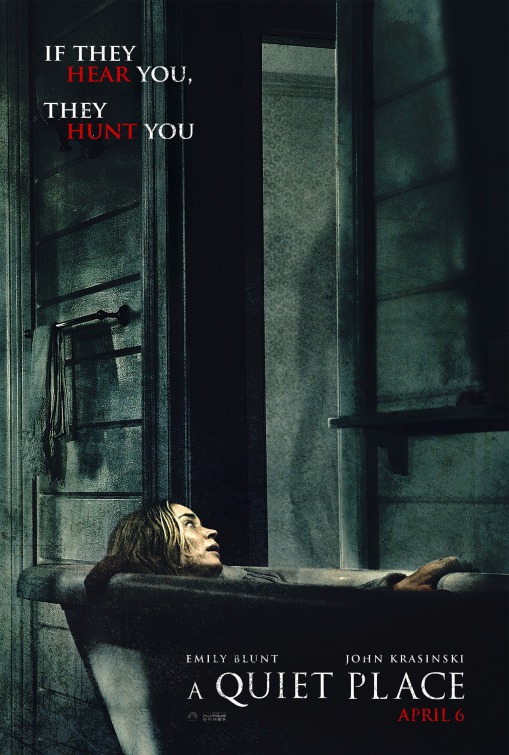by Chris Feil
 Family tragedy strikes early in A Quiet Place, with the sudden violent loss of the youngest of three children dividing each remaining family member by their own griefs and grudges. With this, his third feature, actor John Krasinski has made a rather astute portrait of grief with shades of Spielberg that is both lean and unpretentious. But this emotional family drama is more than just that: it’s also nerve-fraying creature feature.
Family tragedy strikes early in A Quiet Place, with the sudden violent loss of the youngest of three children dividing each remaining family member by their own griefs and grudges. With this, his third feature, actor John Krasinski has made a rather astute portrait of grief with shades of Spielberg that is both lean and unpretentious. But this emotional family drama is more than just that: it’s also nerve-fraying creature feature.
The family, led by Krasinski and Emily Blunt, is one of the remaining survivors of a world decimated by an unspecified (but probably extraterrestrial) species. These creatures hunt people by sound alone and with shocking speed, turning survival into a tense lifestyle of sanded pathways, technological ingenuity, and softened surfaces. That A Quiet Place functions equally well as drama and horror is its greatest strength. The silence that keeps them alive reflects the emotional blockage that is tearing them apart, and the undiscussed loss catalyzes the film effortlessly.

Krasinski has crafted a ferocious and unfussy piece of genre filmmaking here. The film is a taught package of effective scares running the gamut from jump scares to breathless set pieces, all the more investing because of the strength of the dramatic underpinnings. The layers of characterization and narrative complications reverberate consequences between its two genres symbiotically. The eldest daughter (played by Wonderstruck’s Millicent Simmonds) is deaf, which poses both survivalist convenience for the family but also has its own dangers. The middle son (Wonder’s Noah Jupe) is caught between a forced emotional maturity with the fears of a child. And there’s also the impending doom and safety threat of a very pregnant mother.
It’s classic storytelling where the outside force of the demon or beast forces the characters to deal with their situation. A Quiet Place is so terrifying in the journey to healing that you can ignore how pat its conclusions are or how its swiftness doesn’t allow it to dive into its emotional complexities as deeply as it could. But between moments of sinking yourself into your seat and peeking between your fingers, it treats you to a musing on the utter terror of safely raising a child in an exceedingly dangerous world, of ties that bind no matter how thin they are stretched.

And none of this is to underplay the horror elements at work, because hold onto your hats. Particularly bolstered Blunt’s steely and immensely expressive performance, the film is a near non-stop carnival of being scared senseless. As with the best and most immersive of horrors, the scares begin from its composition - from its fluid, pulsing editing to its immaculate sound design, this one is precisely engineered for maximum thrill. The creature design is both fascinating and repulsive, a cut above the video game-esque monsters these kind of films revert to lately. If you didn’t already have films like Witness to convince you, A Quiet Place is here to remind you that grain silos are really really really bad.
Maybe just shy of being a film that really lingers, A Quiet Place is a high quality horror that sings because of the metaphor within its concept. Confident and casually ambitious, this film just made Krasinski a mainstream director to watch.
Grade: B+